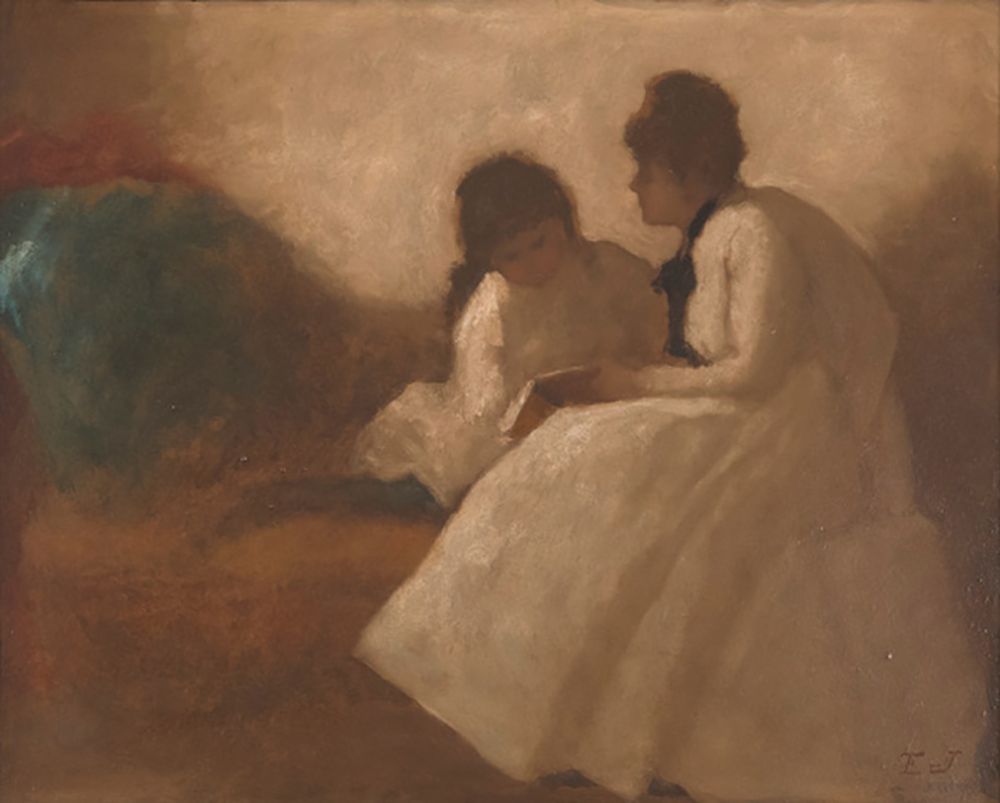Eastman Johnson (1824–1906)
Mother and Child: The Reading Lesson, 1870
Oil on board
McMullen Museum of Art, Boston College, Gift of James E. Sowell in honor of Boston College parent Michael N. Altman for his enduring commitment to the McMullen Museum and the advancement of the study and appreciation of American art, 2021.8

John McCoy
Assistant Director, McMullen Museum

Scenes of children reading both alone and with their mothers were Eastman Johnson’s major subjects in the 1870s, soon after Johnson had fathered his only child. He often used his sister and her children as models for these domestic tableaux, as in his The Little Convalescent (see comparison). In the Victorian era, middle- and upper-class families saw childhood as a state of innocence and grace, and education was a moral imperative for development. This painting depicts both a sacred and fleeting moment of youth and preparation for adulthood to come. The white dresses of mother and child are also symbols of purity.
Johnson was known for his genre paintings—scenes depicting aspects of everyday life. His career began as an apprentice to Boston lithographer J. H. Bufford, whose shop’s output included book illustrations, popular reproductions, and mechanical diagrams. Johnson’s mature paintings reflect something of this prosaic, literal approach to subjects, but coupled with a cosmopolitan, academic style.
Like many American artists of the nineteenth century, Johnson traveled to Europe for his instruction. In his case, this took him to the Düsseldorf Academy, which under the direction of Wilhelm von Schadow popularized German Romanticism, and later to The Hague, where he studied seventeenth-century Dutch masters. His internalization of a naturalistic style, soft brushwork, and a subdued palette (as seen here) led to his moniker “the American Rembrandt.”

